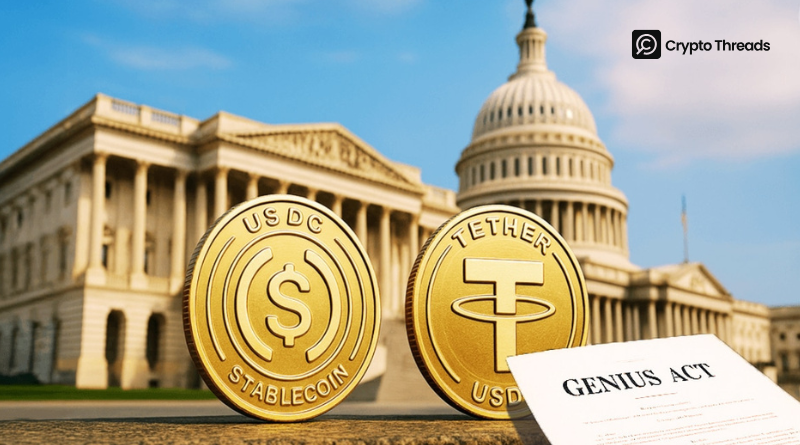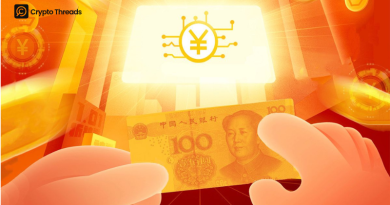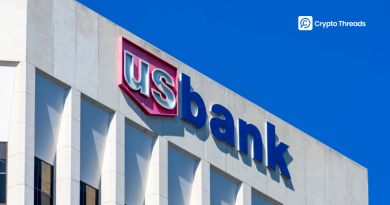RWA Tokenization to Surge After GENIUS Act Becomes Law
Key Takeaways
- GENIUS Act has been signed into law by President Trump, creating regulatory framework for the $260 billion stablecoin market
- RWA tokenization is becoming a promising trend with participation from major institutions
- Private credit accounts for 60% of RWA market, US Treasury bonds account for 28%
- Aptos blockchain has attracted over $540 million in tokenized RWAs
Favorable Regulatory Environment Drives RWA Tokenization
Solomon Tesfaye, newly appointed business director at Aptos Labs, describes RWA tokenization as one of Wall Street’s most promising frontiers. With the GENIUS Act now in effect, he expects momentum to build rapidly.
Tesfaye emphasized: “We are witnessing more open dialogue between policymakers and Web3 leaders, thereby shaping legislation and helping organizations become more confident in committing to longer-term digital asset roadmaps.”
GENIUS Act – Strong Signal from Congress
The Guidance for the United States Stablecoin (GENIUS) Act is considered one of the strongest signals that Congress is ready to support responsible blockchain innovation.
The US House of Representatives passed the GENIUS Act along with two other cryptocurrency-related bills. The legislation establishing a regulatory framework for the $260 billion stablecoin market was signed into law by President Donald Trump.
Important Role of Stablecoins in RWA Ecosystem
One of the immediate beneficiaries of the GENIUS Act is the stablecoin sector. Though often excluded from official RWA metrics, many stablecoins are in fact backed by government securities or other tangible financial instruments, qualifying them as RWAs in practice. Beyond their asset backing, stablecoins also offer high predictability, low fees, and deep liquidity, making them a natural bridge between traditional finance and DeFi.
Stablecoins are widely considered an important stepping stone for future tokenization development, providing:
- High predictability
- Lower transaction costs
- Higher liquidity
- Bridge between traditional finance and decentralized finance (DeFi)
Total stablecoin value has increased by nearly $3 billion in the past seven days, reaching over $261 billion.
Current RWA Market Structure
According to a joint report from RedStone, Gauntlet, and RWA.xyz, the tokenized RWA market is currently dominated by private credit, which accounts for nearly 60% of the total value. Tokenized U.S. Treasury bonds make up the second-largest category, representing around 28%. “Treasuries and private credit were logical starting points,” Tesfaye explained. “On-chain, they offer faster settlement, easier access, and the ability to be fractionalized.”
Future Expansion of RWAs
Looking ahead, RWAs are expected to expand into more complex asset classes such as:
- Derivatives
- Intellectual Property (IP)
- Alternative assets
As financial infrastructure matures, the issue will not just be about accessibility or efficiency but will focus on unlocking entirely new financial products and global participation.
Aptos – New Hub for RWA Activity
Aptos is emerging as a hub for RWA activity. The value of RWAs tokenized on the Aptos blockchain exceeded $540 million by the end of June, led by issuers such as:
- Berkeley Square from PACT Consortium
- BlackRock’s BUIDL (expanded to Aptos less than a year ago)
According to Tesfaye, the favorable regulatory environment in the United States will be the main catalyst for continued development and adoption of tokenized assets in the coming period.
With over $540 million in RWAs already tokenized on Aptos, the blockchain is fast becoming a key hub in this emerging sector. Backed by participants like Berkeley Square and BlackRock’s BUIDL, and fueled by the regulatory tailwinds of the GENIUS Act, Aptos is positioning itself at the center of the RWA revolution.



